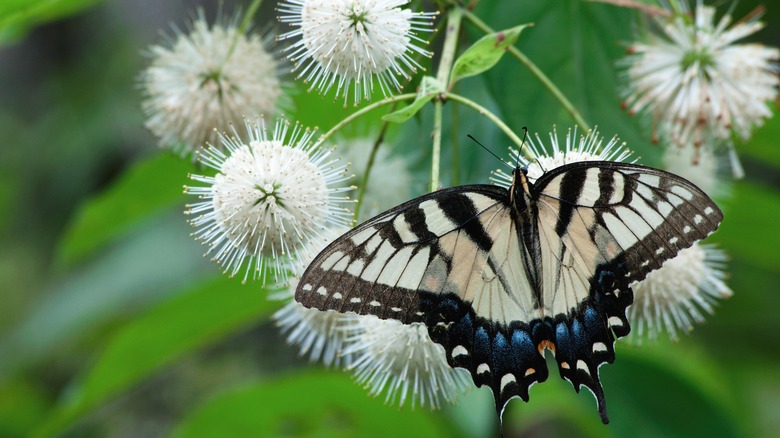The Buttonbush Variety That Won't Take Over Your Backyard (& Where It Grows Best)
As distinctive and beneficial as buttonbushes are, their large size often makes them impractical for many homeowners to add to their landscape. This is especially unfortunate given how beloved the native North American plants are by pollinators like hummingbirds and bees. Happily, newer dwarf varieties of buttonbush like Sugar Shack buttonbush from Proven Winners are making it possible for those with small gardens to find a spot for this fascinating wetland shrub.
Most varieties of buttonbush (Cephalanthus occidentalis) can easily grow to 8 feet tall and may even reach heights of up to 15 feet. They often have a similarly large spread as well. Sugar Shack buttonbush, on the other hand, shouldn't grow past 5 feet tall and wide. This makes it a far more practical option for gardeners who want to enjoy buttonbush's fascinating ball-like flowers and the pollinators who flock to them, without giving up their whole yard.
Caring for Sugar Shack buttonbush
Sugar Shack buttonbush, like most other buttonbush cultivars, thrives in full sun to partial sun locations in USDA zones 4 through 10. They require acidic soil with a pH below 6.0, so it's best to measure the pH of your soil before planting. As buttonbushes are native to wetlands, they grow best in moist soil and may require regular watering if they are planted in soil that is prone to drying out. This means that unfortunately, they aren't the best option for gardeners in dry or drought-prone areas.
If your buttonbush is beginning to look overgrown, it can be easily pruned back in early spring. This shouldn't result in any fewer flowers as Sugar Shack buttonbush blooms on new wood, and buttonbushes are generally quite late to break dormancy in spring. You can also provide your buttonbush with some slow-release fertilizer in spring to ensure its pin cushion-like flowers bloom their best.
The best location for your Sugar Shack buttonbush
Because Sugar Shack buttonbush, like its larger relatives, thrives in wetlands and swamps, it is an ideal addition to a rain garden. Look for a low area near a downspout where water naturally collects to plant your shrub. This should result in a plant that requires far less watering and can thrive with little assistance from you.
Buttonbushes are big hits with pollinators, including honeybees, eastern tiger swallowtail butterflies, and hummingbirds, and can be a great start to pollinator garden. Plants like astilbe, swamp milkweed, and red osier dogwood all grow in similar conditions and can make great companions for buttonbushes and treats for pollinators. Thanks to the Sugar Shack's relatively compact size, you should have plenty of room to add other plants around it. Considering how beautiful, practical, and beneficial the Sugar Shack buttonbush is, it's no wonder The Pennsylvania Horticultural Society named it one of their 2024 gold medal winners.



